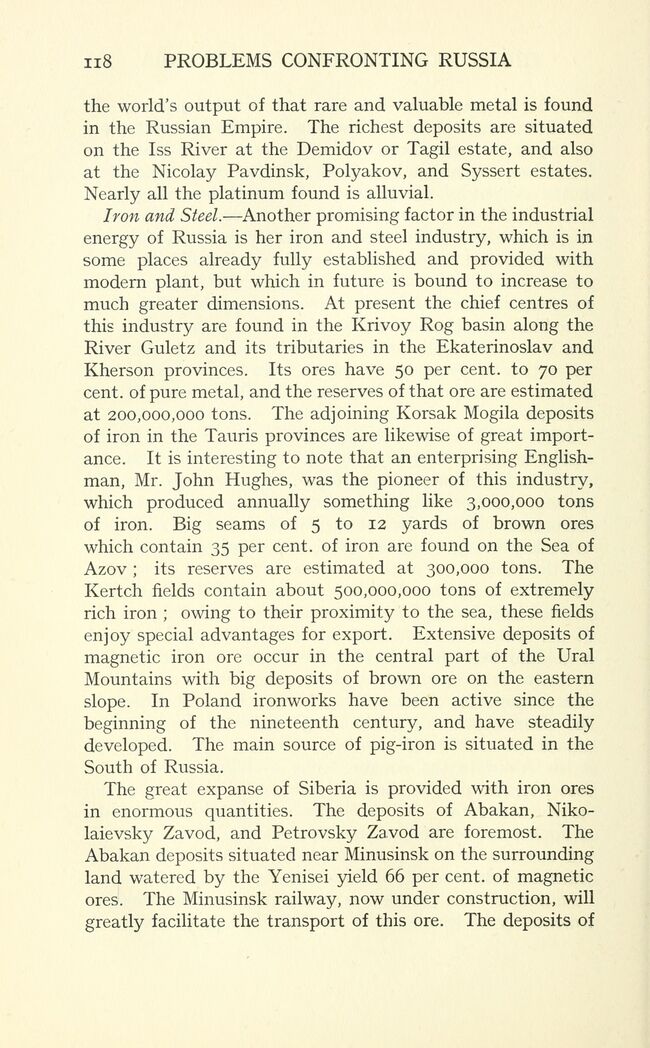
Full resolution (JPEG) - On this page / på denna sida - IX. The economic resources of Russia with special reference to British industrial and commercial opportunities

<< prev. page << föreg. sida << >> nästa sida >> next page >>
Below is the raw OCR text
from the above scanned image.
Do you see an error? Proofread the page now!
Här nedan syns maskintolkade texten från faksimilbilden ovan.
Ser du något fel? Korrekturläs sidan nu!
This page has never been proofread. / Denna sida har aldrig korrekturlästs.
102 PROBLEMS CONFRONTING RUSSIA
the world’s output of that rare and valuable metal is found
in the Russian Empire. The richest deposits are situated
on the Iss River at the Demidov or Tagil estate, and also
at the Nicolay Pavdinsk, Polyakov, and Syssert estates.
Nearly all the platinum found is alluvial.
Iron and Steel.—Another promising factor in the industrial
energy of Russia is her iron and steel industry, which is in
some places already fully established and provided with
modern plant, but which in future is bound to increase to
much greater dimensions. At present the chief centres of
this industry are found in the Krivoy Rog basin along the
River Guletz and its tributaries in the Ekaterinoslav and
Kherson provinces. Its ores have 50 per cent, to 70 per
cent, of pure metal, and the reserves of that ore are estimated
at 200,000,000 tons. The adjoining Korsak Mogila deposits
of iron in the Tauris provinces are likewise of great
importance. It is interesting to note that an enterprising
Englishman, Mr. John Hughes, was the pioneer of this industry,
which produced annually something like 3,000,000 tons
of iron. Big seams of 5 to 12 yards of brown ores
which contain 35 per cent, of iron are found on the Sea of
Azov ; its reserves are estimated at 300,000 tons. The
Kertch fields contain about 500,000,000 tons of extremely
rich iron ; owing to their proximity to the sea, these fields
enjoy special advantages for export. Extensive deposits of
magnetic iron ore occur in the central part of the Ural
Mountains with big deposits of brown ore on the eastern
slope. In Poland ironworks have been active since the
beginning of the nineteenth century, and have steadily
developed. The main source of pig-iron is situated in the
South of Russia.
The great expanse of Siberia is provided with iron ores
in enormous quantities. The deposits of Abakan,
Niko-laievsky Zavod, and Petrovsky Zavod are foremost. The
Abakan deposits situated near Minusinsk on the surrounding
land watered by the Yenisei yield 66 per cent, of magnetic
ores. The Minusinsk railway, now under construction, will
greatly facilitate the transport of this ore. The deposits of
<< prev. page << föreg. sida << >> nästa sida >> next page >>